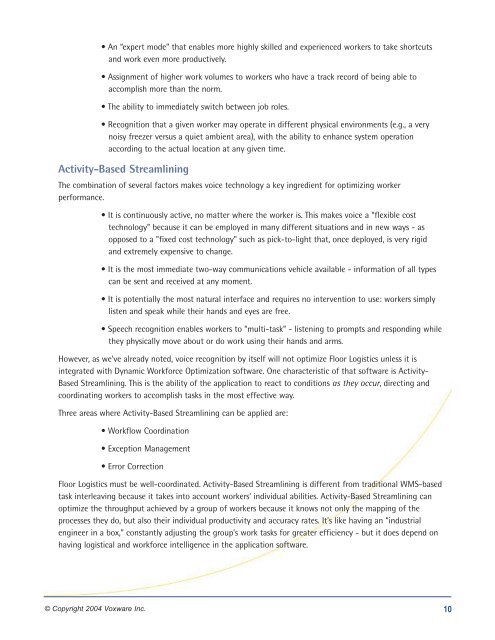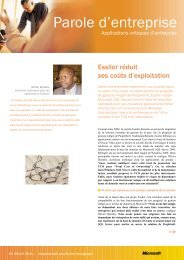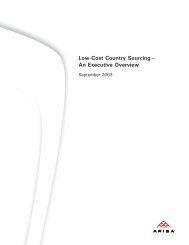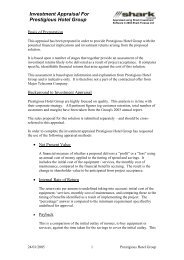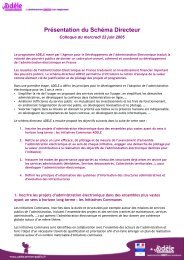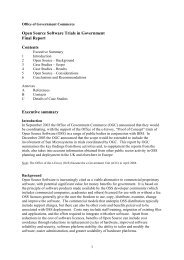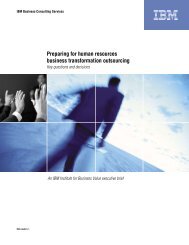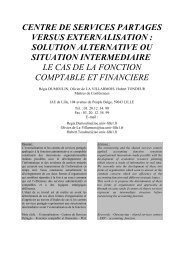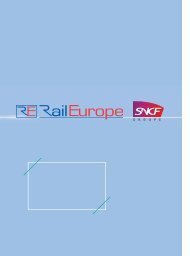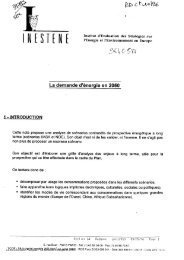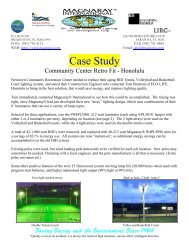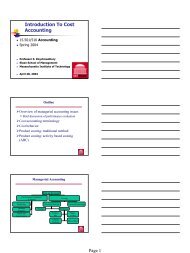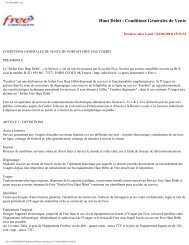Optimizing the Front Line - Costkiller
Optimizing the Front Line - Costkiller
Optimizing the Front Line - Costkiller
Create successful ePaper yourself
Turn your PDF publications into a flip-book with our unique Google optimized e-Paper software.
© Copyright 2004 Voxware Inc.<br />
An “expert mode” that enables more highly skilled and experienced workers to take shortcuts<br />
and work even more productively.<br />
Assignment of higher work volumes to workers who have a track record of being able to<br />
accomplish more than <strong>the</strong> norm.<br />
The ability to immediately switch between job roles.<br />
Recognition that a given worker may operate in different physical environments (e.g., a very<br />
noisy freezer versus a quiet ambient area), with <strong>the</strong> ability to enhance system operation<br />
according to <strong>the</strong> actual location at any given time.<br />
Activity-Based Streamlining<br />
The combination of several factors makes voice technology a key ingredient for optimizing worker<br />
performance.<br />
It is continuously active, no matter where <strong>the</strong> worker is. This makes voice a “flexible cost<br />
technology” because it can be employed in many different situations and in new ways - as<br />
opposed to a "fixed cost technology" such as pick-to-light that, once deployed, is very rigid<br />
and extremely expensive to change.<br />
It is <strong>the</strong> most immediate two-way communications vehicle available - information of all types<br />
can be sent and received at any moment.<br />
It is potentially <strong>the</strong> most natural interface and requires no intervention to use: workers simply<br />
listen and speak while <strong>the</strong>ir hands and eyes are free.<br />
Speech recognition enables workers to “multi-task” - listening to prompts and responding while<br />
<strong>the</strong>y physically move about or do work using <strong>the</strong>ir hands and arms.<br />
However, as we've already noted, voice recognition by itself will not optimize Floor Logistics unless it is<br />
integrated with Dynamic Workforce Optimization software. One characteristic of that software is Activity-<br />
Based Streamlining. This is <strong>the</strong> ability of <strong>the</strong> application to react to conditions as <strong>the</strong>y occur, directing and<br />
coordinating workers to accomplish tasks in <strong>the</strong> most effective way.<br />
Three areas where Activity-Based Streamlining can be applied are:<br />
Workflow Coordination<br />
Exception Management<br />
Error Correction<br />
Floor Logistics must be well-coordinated. Activity-Based Streamlining is different from traditional WMS-based<br />
task interleaving because it takes into account workers’ individual abilities. Activity-Based Streamlining can<br />
optimize <strong>the</strong> throughput achieved by a group of workers because it knows not only <strong>the</strong> mapping of <strong>the</strong><br />
processes <strong>the</strong>y do, but also <strong>the</strong>ir individual productivity and accuracy rates. It's like having an “industrial<br />
engineer in a box,” constantly adjusting <strong>the</strong> group's work tasks for greater efficiency - but it does depend on<br />
having logistical and workforce intelligence in <strong>the</strong> application software.<br />
10


